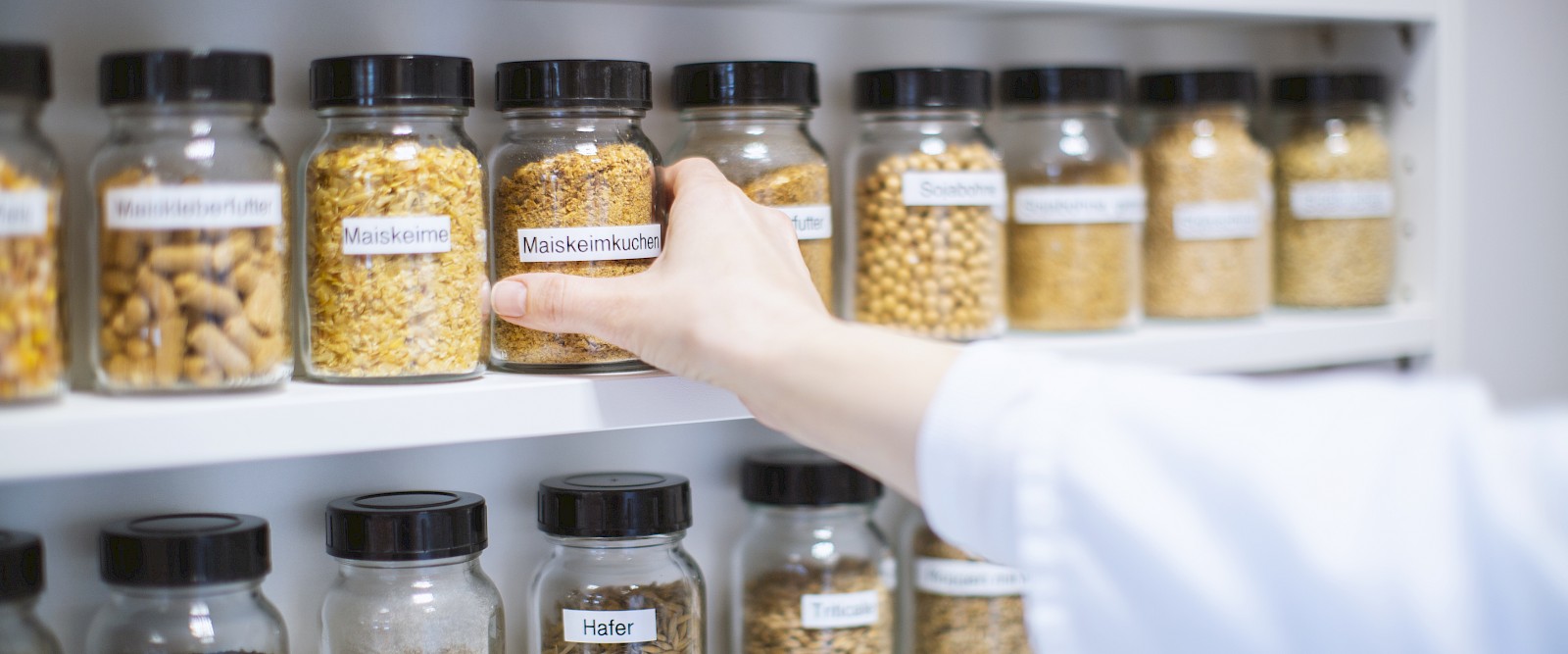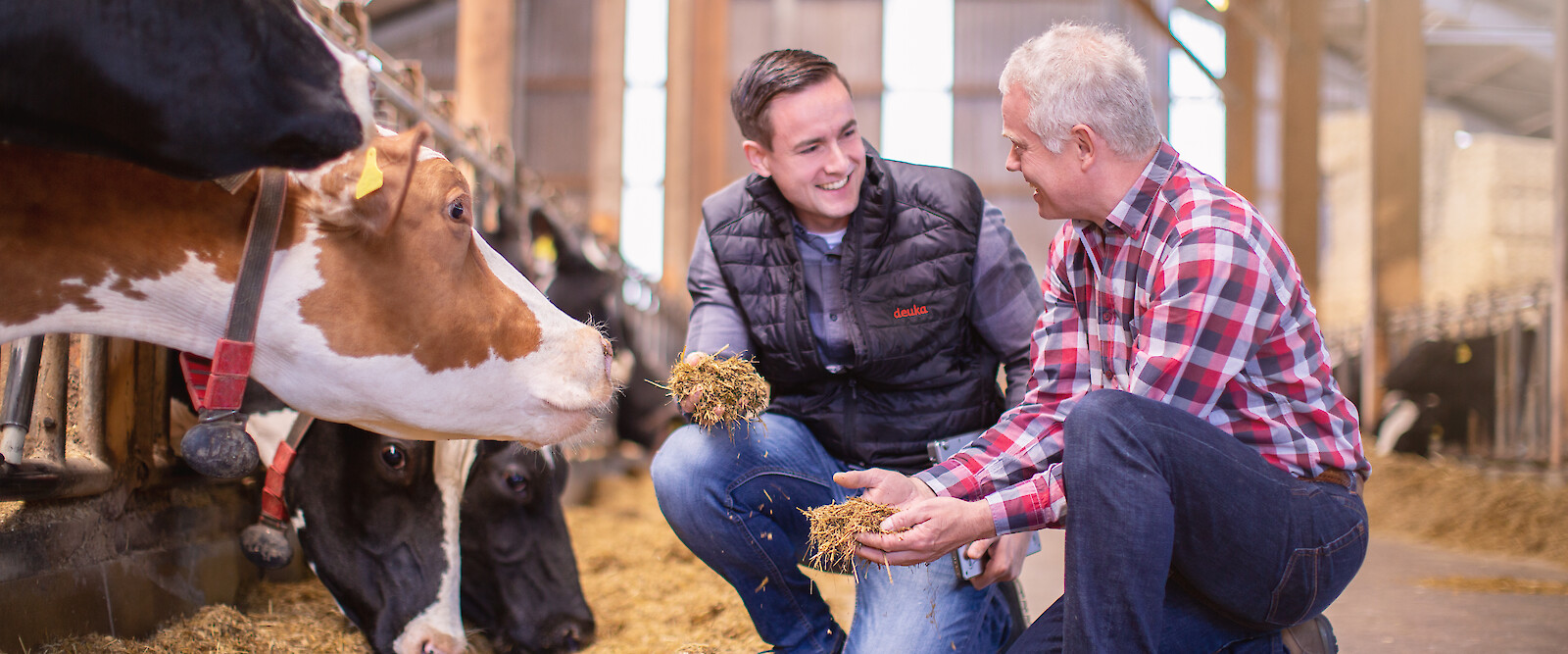Raw material and nutrient lexicon
Weitere Einträge
- Rapeseed cake
- Rapeseed extraction meal
- Crude ash
- Crude fibre
- Crude fat
- Crude protein
- Rumen resistant starch (bXS)
- Ruminal N balance (RNB)
- Rye
- Rye bran
Crude protein
Crude protein is the protein contained in the feed. Raw protein is analysed by determining the most important element in protein, nitrogen. On average, protein contains about 16 % nitrogen. The crude protein (protein) content is then calculated from the determination of the nitrogen content of a feed. Feed protein is a prerequisite for building up the body's own protein substances and cannot be replaced in this function by any other nutrient, as neither fats nor carbohydrates contain the nitrogen required for protein build-up. This means that the supply of sufficient high-quality crude protein is of vital importance for every organism.
The body must be supplied with at least enough protein daily so that the metabolism can produce as much of the body's own protein as it has consumed since the last protein intake. The protein requirement is particularly high during body growth. In addition, the composition of the raw protein supplied with the feed is of decisive importance. The building blocks of protein are the amino acids. Every organism has a certain daily requirement for the individual amino acids. A good 20 different amino acids are known today, about half of which are considered essential, i.e. necessary for life, because the body cannot synthesise them itself. The remaining amino acids can be produced in the metabolism from the other amino acids. For this, it is necessary that the body is supplied with a total of sufficient amino acids - i.e. ultimately raw protein - through feeding. The amino acids known today are listed below: Alanine, glutamic acid, lysine, arginine, glycine, phenylalanine, asparagine, histidine, proline, aspartic acid, hydroxyproline, serine, cysteine/cystine, isoleucine, threonine, glutamine, leucine, tyrosine, tryptophan, methionine, valine
The following are considered essential amino acids: Lysine, methionine, threonine, tryptophan, leucine, isoleucine, valine, phenylalanine, arginine and histidine. For animal nutrition, the so-called first-limiting amino acids are initially the focus of interest. These are lysine, methionine, threonine and tryptophan. All other essential amino acids are present in a feed according to need, if the known protein requirement of the animal is covered by the crude protein content in the feed. Particularly rich in protein are all by-products from the extraction of vegetable oil for human nutrition, the so-called oil meals (e.g. soya meal, sunflower meal, rapeseed meal). In contrast, all types of cereals contain little crude protein.
Further links
- You can find out more about"protein" in the nutrient lexicon at www.deuka-companion.com.






